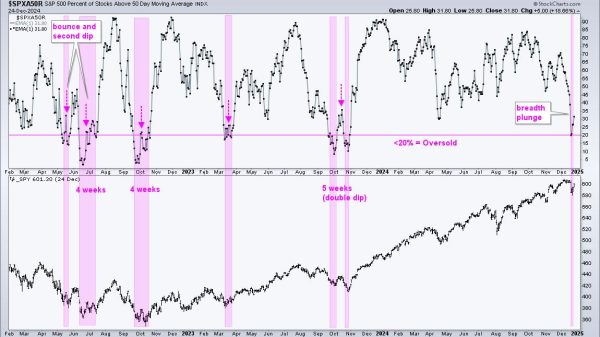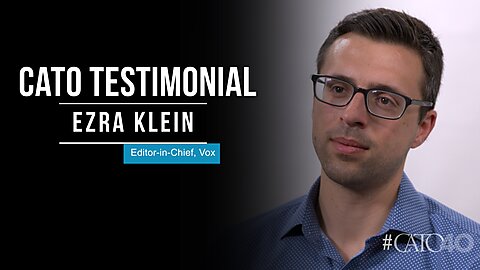Daniel Raisbeck
During his speech at a June 12 event in Buenos Aires, held by the Cato Institute and local think tank Libertad y Progreso, Argentina’s President Javier Milei pointed to the sale of puts on Treasury bonds as part of the ruinous inheritance he received from the last government. Puts are options in which the seller agrees to buy a security at a lower price (the strike) than when the contract is agreed upon if the buyer so chooses, whereas the buyer risks losing the cost of the option if the strike price does not materialize before the expiration date.
The puts strategy, Milei argued in Buenos Aires, was one of the previous government’s “major perversions.” This is true; former President Alberto Fernández’s administration did introduce the puts as a failed means to counter a run on Argentine debt instruments. Still, during the first six months of Milei’s government, the central bank sold a far greater peso amount of puts than the previous government during its last six months in office, as evidenced by 1816, an Argentine consulting firm that analyzes the central bank’s figures. Indeed, the sale of puts has been a key part of the “dilution” mechanism implemented by Luis Caputo, Milei’s finance minister.
Dilution consists of lowering interest rates drastically while inflation remains high, so that the government’s debt is thinned or diluted through inflation. However, diluting the debt involves devaluing fixed-term deposits by individuals and businesses. As my colleague Gabriela Calderón and I have argued, dilution is incompatible with dollarization, which Milei promised to bring about during last year’s campaign. He also pledged to shut down Argentina’s central bank. Both measures are still necessary. Although Milei still pledges to carry them out, the plan for executing dollarization is unclear.
At the end of the last government, Argentina faced triple-digit annual inflation levels due to the entrenched practice of monetizing the debt incurred to finance profligate spending. One of the main drivers of inflation was the mountain of interest-bearing liabilities on the central bank’s balance sheet, worth around USD $30 billion. Known as liquidity notes (Leliqs), these liabilities had very short-term maturities, ranging from 24 hours (notes known as Pases) to 28 days (with a rollover mechanism), and an effective annual interest rate of 155 percent when inflation stood at around 130 percent per annum. Only the commercial banks had access to the Leliq market, so Argentine banks, through mere access to the central bank, had one of the highest Return on Assets ratios in Latin America. But the only way for the central bank to finance the Leliq scheme was by issuing more Leliqs. At one point it was issuing the equivalent of the entire monetary base every five months. Hence the very real possibility of hyperinflation.
Upon taking office, Caputo transferred the central bank’s liabilities to the Treasury. The new notes also matured every 24 hours but at far lower interest rates than before (100 percent initially). The annual interest rate for fixed-term deposits was also cut to 110 percent (from 133 percent previously). Plus, the Treasury issued 28-day bonds yielding 180 percent per annum and medium-term issues (1–3 years) indexed to inflation. Today, the benchmark interest rate stands at 40 percent after six cuts (still well below inflation even as inflation drops sharply).
Since the banks are still the main buyers of Argentine debt, they had to be incentivized to buy the new Treasury issues, with lower rates and longer maturity periods. This is where the puts come in. They are an “insurance” mechanism that, in effect, creates a floor that protects the buyer (i.e. the banks), with a guarantee from the central bank to rebuy the Treasury bonds at the strike price in case bond prices drop far below face value. Currently, around USD $21 billion of Treasury bonds are “insured” through puts, with around 50 percent due to expire in 2026 and 2027. If the options were to be exercised instantly during a bond market rout (hence Milei’s concern with the “American” puts, which account for the majority of the total), the central bank would only be able to pay the commercial banks by issuing the money ex nihilo.
The government’s strategy is risky, and highly inflationary in a worst-case scenario. Hence the concern with any movement that could cause market jitters. This includes, in their view, getting rid of exchange rate controls. On the other hand, the International Monetary Fund, which by no means represents a radically libertarian viewpoint, has urged the government to free the exchange rate.
The government’s reticence to move quickly to end exchange rate controls underscores the peril of selling puts on Treasury debt. The risk of a blow-up might not seem imminent, especially while the market backs Milei’s broad reform agenda, which now appears to finally have support from Congress. But any exogenous shock that hits the bond market in the next three years could unleash a deluge of newly created pesos into the banking system, thus undoing all efforts to ease inflation. The dilution strategy has thus left the Argentine state dangerously exposed to unforeseen events, as is the general case with put sellers. Contrariwise, the buyer of out-of-market puts runs the high risk of a small loss in exchange for the small probability of exponential gains.
The irony is that Caputo’s approach rests on the premise that dollarization under current conditions is a far too risky path for Argentina. Hence his insistence on a series of pre-conditions prior to dollarization and prior even to removing the cepo. As Mary Anastasia O’Grady writes in The Wall Street Journal, the official stance, despite the urgent need to attract foreign investment, is that it is necessary “to achieve fiscal balance, defeat inflation, and clean up short-term debt held by the banks before it lifts capital and exchange controls.”
Ideally, a free-floating rate would remove a major source of price manipulation in Argentina, thus allowing markets to clear, as O’Grady argues. Nonetheless, if the government sought to dollarize now, lifting exchange rate controls would not be indispensable. In 2000, Ecuador dollarized simply by overshooting the lower bounds of the black-market exchange rate.
Since Argentina’s blue dollar value is the closest thing to a free-floating exchange rate, either overshooting or undershooting it to dollarize would distort prices further. Undershooting would benefit depositors, who generally have no access to the overvalued, official exchange rate. But undershooting would create greater liabilities for the central bank and commercial banks, which would have to exchange people’s pesos for dollars during a determined time period (in Ecuador, the government mandated a nine-month period during which the dollar circulated alongside the old national currency). In terms of dollarization, undershooting also would be counterproductive; the government would create a sudden demand for pesos, whereas the point of dollarization is to no longer have a local currency.
On the other hand, overshooting—as long as it is not overdone so as to exacerbate inflation— favors the banks and the government itself because it reduces their liabilities vis-à-vis their creditors. But consider that even freeing the exchange rate involves a “devaluation” of sorts, insofar as the government admits that its official rate is massively overvalued. The same applies to dollarizing at the blue dollar rate. Slightly overshooting that rate would bolster the move away from a weak currency that is artificially strengthened through government fiat. By overshooting, the government would benefit one final time at the expense of current peso holders. In the long run, however, the effect of such a “devaluation” ends up being minimal compared to the proven benefits of dollarization, as Ecuador’s case clearly proves.
Hence, dollarizing at Argentina’s “blue” dollar rate—or slightly overshooting it—remains a perfectly good option to stabilize the currency once and for all. The government would further send a clear signal that it no longer denies the reality of market forces in currency exchange markets.
Nor are there fiscal preconditions to dollarization. As economist Francisco Zalles notes, Ecuador’s foreign liabilities were far greater than its foreign exchange reserves in 1999 (63 percent negative net reserves in terms of total reserves) than was the case for Argentina earlier this year (negative 35 percent net reserves). Since immediate dollarization is viable, Caputo’s insistence on achieving positive net reserves prior to lifting the cepo becomes a moot point.
As things stand, the allegedly safer alternative to dollarization (the sale of puts) involves the implicit guarantee of printing money suddenly and on a massive scale, thus leaving the government’s entire anti-inflation project at risk. Although Argentina’s chronic fiscal problem is certainly improving, propping up the peso while dilution takes place—and expanding the monetary base (among other reasons due to the puts strategy), as has been the case since December—remains potentially explosive.
Consider also that the latest round of dilution, with interest rates lowered to 40 percent, has meant that the carry trade—the practice of borrowing at a low interest rate in one currency to invest at a high rate in another—is far less attractive in light of the risk involved. In part, this explains the recent rise in the blue dollar, which sells for ARS $1,420 at the time of writing versus ARS $980 in early March. Caputo set the official exchange rate, to which the general public has limited access, at ARS $800 to the dollar in late December, with a 2 percent monthly crawling peg. The official rate now sits at ARS $956. After a brief respite, the currency market has once again become skittish. This explains, I think, why Milei once again promised dollarization in recent weeks, albeit while maintaining his “fiscal surplus first” approach.
One great advantage of dollarization, however, is that it makes fiscal policy largely irrelevant in terms of the stability of people’s savings and purchasing power, all while inflation drops rapidly to merge roughly with US levels, which is precisely what Argentina needs now.
To their credit, Milei and Caputo have set Argentina, a chronic defaulter on its debt, on the correct fiscal path. But even their most ardent supporters should recognize the high probability of an eventual return to fiscal recklessness under a future government. This is why delaying dollarization any further is the least prudent option available.
























